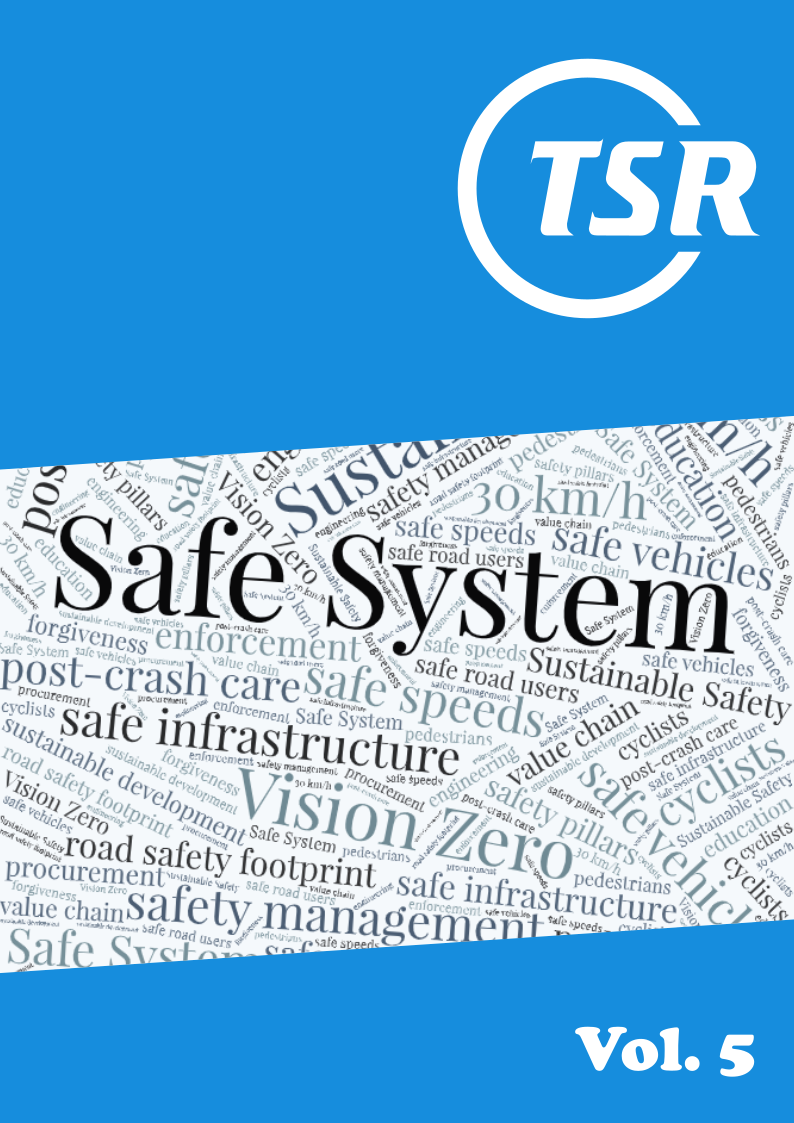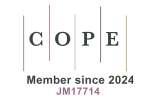Windshield bias is real: 2019 news coverage of pedestrian traffic fatalities in the United States
DOI:
https://doi.org/10.55329/vfjb6171Keywords:
Frost Belt, news coverage, partisan segregation, pedestrian traffic fatality, Sun Belt, walkabilityAbstract
Framing pedestrian traffic fatalities episodically rather than thematically, attributing responsibility to pedestrians for their own deaths and non-agential descriptions of traffic crashes reflects windshield bias. Pedestrian traffic fatality rates increased dramatically in the U.S. over the previous decade. Findings from this content analysis of 2019 U.S. news coverage supports conclusions that windshield bias is national in scope, varies between cities in the Sun Belt and Frost Belt, and is associated with reduced walkability and greater partisan segregation of cities. The 2016 vote for Republican Donald Trump was also positively associated with episodic framing. An inverse association between word length and windshield bias was also established. The data set analyzed included 366 news articles drawn from 78 news sources in 74 cities located in 30 states.
Downloads
References
Academic_Expert_Group, (2019), 'Saving lives beyond 2020: The next steps', Recommendations of the Academic Expert Group for the Third Ministerial Conference on Global Road Safety 2020.
Belin, M.-Å., P. Tillgren, E. Vedung (2012), 'Vision Zero—a road safety policy innovation', International Journal of Injury Control and Safety Promotion, 19, 171–179. DOI: https://doi.org/10.1080/17457300.2011.635213
Buehler, R., J. Pucher (2021), 'The growing gap in pedestrian and cyclist fatality rates between the United States and the United Kingdom, Germany, Denmark, and the Netherlands, 1990–2018', Transport Reviews, 41(1), 48–72. DOI: https://doi.org/10.1080/01441647.2020.1823521
Balsas, C. J. L. (2019), Walkable cities: Revitalization, vibrancy, and sustainable consumption, (Albany, NY, USA: SUNY Press). DOI: https://doi.org/10.1515/9781438476292
Chermak, S. (1998), 'Predicting crime story salience: The effects of crime, victim, and defendant characteristics', Journal of Criminal Justice, 26(1), 61–70. DOI: https://doi.org/10.1016/S0047-2352(97)00055-X
Chittum, R. (2011), 'The shorter-form journal: The number of long stories has plunged under Murdoch', Columbia Journalism Review.
Combs, B., P. Slovic (2016), 'Newspaper coverage of causes of death', Journalism and Mass Communication Quarterly, 56(4), 837–849. DOI: https://doi.org/10.1177/107769907905600420
Cook, T. E. (1998), Governing with the news: The news media as a political institution, (Chicago, IL, USA: The University of Chicago Press).
Desilver, D. (2014), 'How the most ideologically polarized Americans live different lives', Pew Research Center (13 June 2014).
Dottle, R. (2019), 'Where Democrats and Republicans live in your city', FiveThirtyEight (15 May 2022).
Fausey, C. M., L. Boroditsky (2010), 'Subtle linguistic cues influence perceived blame and financial liability', Psychonomic Bulletin & Review, 17, 644–650. DOI: https://doi.org/10.3758/PBR.17.5.644
Fulton, W. (2022), Place and prosperity: How cities help us to connect and innovate, (Washington, DC, USA: Island Press).
Gans, J. H. (1979), Deciding What’s News: A Study of CBS Evening News, NMB Nightly News, Newsweek, and Time, (New York, NY, USA: Pantheon Books).
Gilchrist, K. (2010), ' “Newsworthy” Victims?', Feminist Media Studies, 10(4), 373–390. DOI: https://doi.org/10.1080/14680777.2010.514110
Green, J. (2019), 'Collision claims pedestrian', Mercury News (18 December 2019).
Grieco, E. (2020), 'Americans main sources for political news vary by party and age', Pew Research Center (1 April 2020).
Gutsche, R. E. (2015), 'Boosterism as Banishment: Identifying the power function of local, business news and coverage of city spaces', Journalism Studies, 16(4), 497–512. DOI: https://doi.org/10.1080/1461670X.2014.924730
Hass, K. A. (2022), Blunt instruments: Recognizing cultural infrastructure in memorials, museums and patriotic practices, (Boston, MA, USA: Beacon Press).
Hoehner, C. M., S. L. Handy, Y. Yan, S. N. Blair, D. Berrigan (2011), 'Association between neighborhood walkability, cardiovascular fitness and body-mass index', Social Science and Medicine, 73(12), 1707–1716. DOI: https://doi.org/10.1016/j.socscimed.2011.09.032
Johnson-Cartee, K. S. (2005), News narratives and news framing: Constructing political reality, (Lanham, MD, USA: Rowman and Littlefield).
Keliikoa, L. B., M. D. Thompson, C. J. Johnson, S. L. Cacal, C. M. Pirkle, T. L. Sentell (2022), 'Public health framing in local media coverage of crashes involving pedestrians or bicyclists in Hawai‘i, 2019: A content analysis', Transportation Research Interdisciplinary Perspectives, 13, 100525. DOI: https://doi.org/10.1016/j.trip.2021.100525
Kim, J. (2023), 'U.S. pedestrian deaths reach a 40-year high', National Public Radio (26 June 2023).
King, K. E., P. J. Clarke (2014), 'A Disadvantaged Advantage in Walkability: Findings From Socioeconomic and Geographical Analysis of National Built Environment Data in the United States', American Journal of Epidemiology, 181(1), 17–25. DOI: https://doi.org/10.1093/aje/kwu310
Kristianssen, A.-C., R. Andersson, M.-A. Belin, P. Nilsen (2018), 'Swedish Vision Zero policies for safety: A comparative policy content analysis', Safety Science, 103, 260–269. DOI: https://doi.org/10.1016/j.ssci.2017.11.005
Magusin, H. (2017), 'If you want to get away with murder, use your car: A discursive content analysis of pedestrian traffic fatalities in news headlines', Earth Common Journal, 7(1), 65–97. DOI: https://doi.org/10.31542/j.ecj.1229
Middleton, J. (2022), 'The Walkable City: Dimensions of Walking and Overlapping Walks of Life', (London, UK: Routledge). DOI: https://doi.org/10.4324/9781315519210
Morse, T. (2017), The Mourning News: Reporting violent death in a global age, (New York, NY, USA: Peter Lang Publishing).
NHTSA, (2019), 'Traffic Fafety Facts 2019', U.S. Department of Transportation.
Nihlén Fahlquist, J. (2006), 'Responsibility ascriptions and Vision Zero', Accident Analysis & Prevention, 38(6), 1113–1118. DOI: https://doi.org/10.1016/j.aap.2006.04.020
O'Neill, D., C. O’Connor (2008), 'The passive journalist: How sources dominate local news', Journalism Practice, 2(3), 487–500. DOI: https://doi.org/10.1080/17512780802281248
Pew Research Center, (2022), 'As partisan hostility grows, signs of frustration with the two-party system', Pew Research Center (9 August 2022).
Pew Research Center, (2021), 'How America changed during Donald Trump’s presidency', Pew Research Center (29 January 2021).
Pope, K. (2018), 'So you want to be a journalist?', Columbia Journalism Review.
Ralph, K., I. Girardeau (2020), 'Distracted by “distracted pedestrians”?', Transportation Research Interdisciplinary Perspectives, 5, 100118. DOI: https://doi.org/10.1016/j.trip.2020.100118
Sanders, R. L., R. J. Schneider (2022), 'An exploration of pedestrian fatalities by race in the United States', Transportation Research Part D, 107, 103298. DOI: https://doi.org/10.1016/j.trd.2022.103298
Schmitt, A. (2020), Right of Way, (Washington, DC, USA: Island Press).
Short, J. R., L. M. Pinet-Paeralta (2010), 'No accident: Traffic and pedestrians in the modern city', Mobilities, 5(1), 41–59. DOI: https://doi.org/10.1080/17450100903434998
Singer, E., P. M. Endreny (1993), Reporting on Risk: How the Mass Media Portray Accidents, Diseases, Disasters, and Other Hazards, (New York, NY, USA: Russell Sage Foundation).
Soderstrom, M. (2008), The walkable city: From Haussman’s boulevards to Jane Jacob’s streets and beyond, (Montréal, Québec, Canada: Véhicule Press).
Speck, J. (2018), Walkable city rules: 101 steps to making better places, (Washington, DC, USA: Island Press). DOI: https://doi.org/10.5822/978-1-61091-899-2
Speck, J. (2012), Walkable city: How downtown can save America, one step at a time, (New York, NY, USA: North Point Press).
Spurr, B. (2016), 'Advocates push to change the way people talk about car “accidents” ', Toronto Star, 12 December 2016.
Storm, E. (2016), 'How Place Matters: A View from the Sunbelt', Urban Affairs Review, 53(1), 197–209. DOI: https://doi.org/10.1177/1078087416633533
Torres-Cortez, R. (2019), 'Woman, 65, hit by car dies at hospital', Las Vegas Sun (30 May 2019).
Vanderbilt, T. (2008), Traffic: Why we drive the way we do (and what it says about us), (New York, NY, USA: Vintage Books). DOI: https://doi.org/10.17077/drivingassessment.1294
Vanderbilt, T. (2019), 'Crash course: How to cover a car wreck', Columbia Journalism Review.
Walk_Score, (n/d), 'Live where you love'.
Werner, D. (2019), 'Looking at the language of crashes', Press-Republican (17 July 2019).
White, K., F. Stuart, S. L. Morrissey (2021), 'Whose lives matter? Race, space, and the devaluation of homicide victims in minority communities', Sociology of Race and Ethnicity, 7(3), 333–349. DOI: https://doi.org/10.1177/2332649220948184
Published
How to Cite
Issue
Section
License
Copyright (c) 2023 John Hickman

This work is licensed under a Creative Commons Attribution 4.0 International License.








